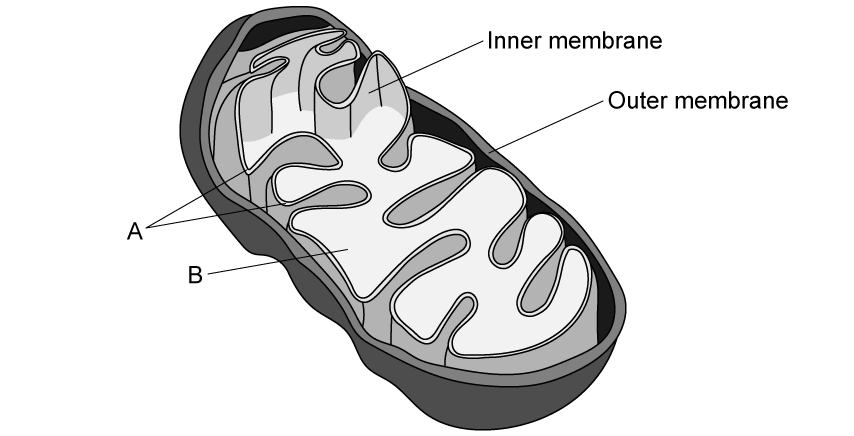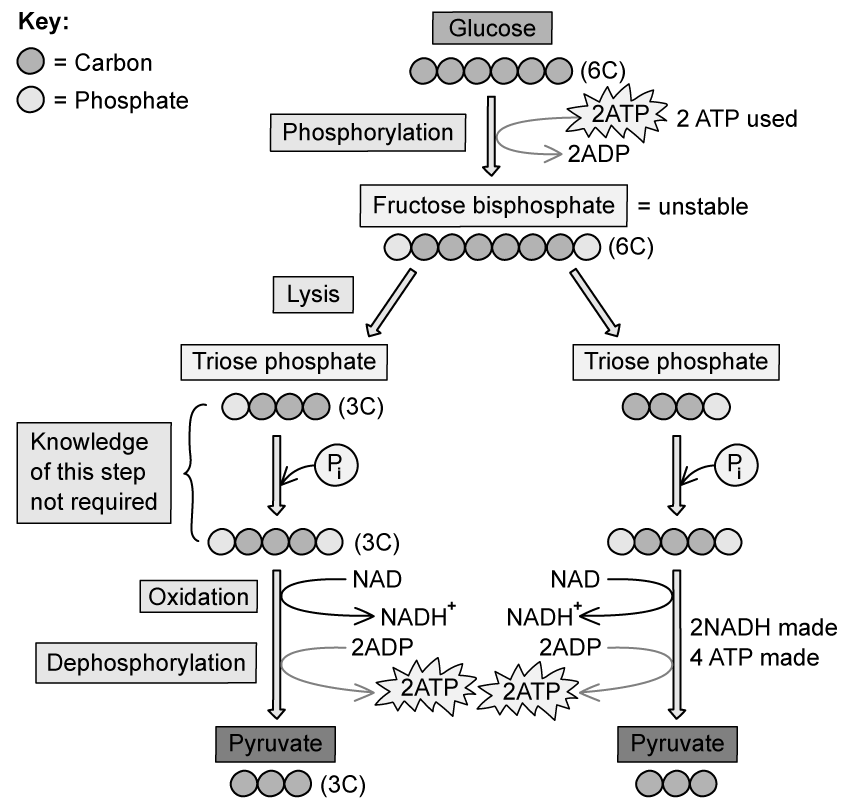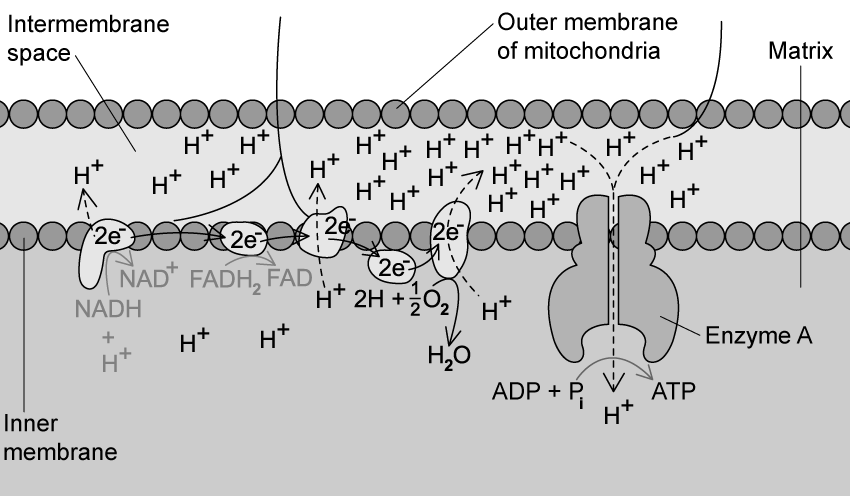a)
The diagram shows a mitochondrion.
Identify the parts labelled A and B .
[2 marks]
Assess your score
View Answer
b)
The stages of respiration take part in different locations in a cell as shown in the table below.
Complete the missing parts of the table.
Stage of respiration Location in cell
Cytoplasm
Link Reaction
Krebs cycle
Matrix of mitochondria
Oxidative phosphorylation
[3 marks]
Assess your score
View Answer
c)
Mitochondria are highly adapted to carry out respiration. One adaptation is a highly folded inner membrane, the cristae.
Describe how the folding of a membrane is an adaptation of an organelle such as the mitochondria.
[1 mark]
Assess your score
View Answer
d)
Anaerobic respiration also occurs in the mitochondria.
State the names of the two stages of anaerobic respiration.
[1 mark]
Assess your score
View Answer
Next Question
a)
Respiration can be represented by a chemical equation.
State the balanced chemical equation for aerobic respiration.
[2 marks]
Assess your score
View Answer
b)
Respiration involves the oxidation and reduction of chemical compounds.
Define oxidation in terms of electrons lost or gained.
[1 mark]
Assess your score
View Answer
c)
The diagram below shows the cyclic formation of ATP from ADP.
Use the diagram to identify which of processes A and B is the process of phosphorylation.
[1 mark]
Assess your score
View Answer
d)
Phosphorylation occurs during the process of glycolysis.
Use the diagram below to describe phosphorylation during glycolysis.
[2 marks]
Assess your score
View Answer
Previous Question Next Question
a)
The Link Reaction is described as an oxidative decarboxylation reaction.
State which molecule is decarboxylated during the Link Reaction.
[1 mark]
Assess your score
View Answer
b)
Coenzyme A is a molecule used in the Link Reaction,
State the role of coenzyme A in the Link Reaction.
[2 marks]
Assess your score
View Answer
c)
During the Krebs cycle, two molecules of carbon dioxide are released.
State how many molecules of carbon dioxide are released in the Krebs cycle per glucose molecule.
[1 mark]
Assess your score
View Answer
d)
The coenzyme NAD is reduced six times during the Krebs cycle stage of respiration.
Describe the events that occur to the molecule of NAD in order to reduce it.
[2 marks]
Assess your score
View Answer
Previous Question Next Question
a)
The diagram below shows the process of oxidative phosphorylation.
Identify enzyme A from the diagram.
[1 mark]
Assess your score
View Answer
b)
Describe the role of enzyme A from the diagram in part (a).
[3 marks]
Assess your score
View Answer
c)
An important process in respiration is the electron transport chain. This uses a series of redox reactions where electrons, donated from specific molecules, are transported through a chain of electron carriers.
State the two molecules which act as electron donors in the electron transport chain.
[2 marks]
Assess your score
View Answer
d)
Oxygen is described as the final electron acceptor in the electron transport chain.
Explain the importance of oxygen as the final electron acceptor.
[3 marks]
Assess your score
View Answer
Previous Question Next Question
One mark is available for clarity of communication throughout this question.
a)
Describe the steps involved in the link reaction.
[3 marks]
Assess your score
View Answer
b)
Describe the role of the inner membrane of the mitochondria.
[4 marks]
Assess your score
View Answer
c)
The four main stages of aerobic respiration are glycolysis, the link reaction, Krebs cycle and oxidative phosphorylation.
Describe each stage, including the location of each.
[8 marks]
Assess your score
View Answer
Previous Question



